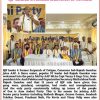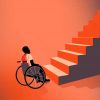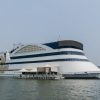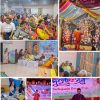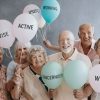Goa is abuzz with excitement as vintage bike and car owners, users, collectors and fans are decking […]

THE MIGRANT AS CITIZEN
FAQ PRESENTATION, July 04- July 10, 2020 July 3, 2020Migrant workers, citizens of India…bedrock of country’s development and progress story. But they are mostly exploited, ignored, neglected, bypassed, overlooked or taken for granted as we learned in recent Covid-19 lockdowns when employed and broke all they wanted to do was return to their home states!
BY NANDITA HAKSAR
First and foremost migrant workers, casual labor which migrates to other places in search of work and income, who do various skilled and unskilled jobs on daily wages, are Indian citizens. And not outsiders as many well-to-do eminently settled employers and citizens in big cities tend to think…those who come make a work load lighter for them certainly deserve to be treated with qualitatively better respect both by State and Central governments and employers.
WE have recently been witnessing a most horrific tragedy in our country’s history. The most visible part of the tragedy is the movement of casual migrant workers back to their home states. It is estimated that as a consequence of the Covid19 lockdown an estimated 114 million job have been lost. Comprising 91 million daily wage earners and 17 million salary earners who have been laid off across 271,000 factories and 65-70 million small and micro enterprises that have come to a grinding halt.
We need to ask WHO is a migrant worker? Why is he/she treated as an outsider instead of as a citizen of his/her country with full rights guaranteed under the Constitution, the law and international labor standards?
There is a need to intervene in the situation to ensure that migrants are assured of their right to livelihood both in their original home state and at the place where they migrate. International agencies have been developing the concept of safe migration – we need to look at the concept more closely in our own context:
- THE MIGRANT AND MIGRATION
THERE is no reliable data on the number of Indians migrants working abroad or within the country. However, even with the limited data the statistics show the scale of the problem .
According to the International Labor Organization (ILO) India is a major country of origin and transit, as well as a popular destination, for workers across international borders. As per official figures, there are over 30 million Indians overseas, with over nine million of the Indian diaspora concentrated in the GCC region (now known as the Cooperation Council for the Arab States of the Gulf). Over 90% of Indian migrant workers, most of whom are low- and semi-skilled workers, work in the Gulf region and South-East Asia. Analysis of international migration trends in India is inhibited by the limited official data available. Data is available only for workers migrating on Emigration Check Required (ECR) passports and to one of the 18 ECR countries.
The International Organization of Migrants calculates that there are 271.6 million migrants all over the world as of 2019.The International Organization of Migrants (IOM) established in 1951, IOM is the leading inter-governmental organization in the field of migration and works closely with governmental, intergovernmental and non-governmental partners. According to the IOM “migrant” is “An umbrella term, not defined under international law, reflecting the common lay understanding of a person who moves away from his or her place of usual residence, whether within a country or across an international border, temporarily or permanently, and for a variety of reasons. The term includes a number of well-defined legal categories of people, such as migrant workers; persons whose particular types of movements are legally-defined, such as smuggled migrants; as well as those whose status or means of movement are not specifically defined under international law, such as international students.”
- WHO IS A MIGRANT WORKER IN INDIA?
THE Census defines a migrant as a person who “is enumerated in census at a different place than his/her place of birth, she/he is considered a migrant.”
Millions of men and women migrate from their homes in rural India to towns and cities in search of work especially during certain seasons. It is estimated that 120 million people or more migrate from rural areas to urban labor markets, industries and farms.
The major migration corridors in India along which large scale movement of workers takes place are shown in the map below. Some regions like UP and Bihar have been known for rural migration for decades — however newer corridors like Odisha, Madhya Pradesh, Rajasthan and recently even the North East have become major sending regions of manual labor.
Among the biggest employers of migrant workers is the construction sector (40 million), domestic work (20 million), textile (11 million), brick kiln work (10 million), transportation, mines & quarries and agriculture. The internal migration almost doubled during 20 years—from 220 million in 1991 to 454 million in 2011.
In addition there are according to Census 2011 around 5.5 million people in India had reported their last residence outside the country which is roughly 0.44 per cent of its total population. Of these, 2.3 million (42 per cent) came from Bangladesh and 0.7 million (12.7 per cent) from Pakistan. The number of immigrants from Afghanistan was low at 6,596.
These numbers show that roughly 55 per cent of the immigrant population, who recorded their last residence outside India, belonged to Pakistan and Bangladesh alone. The Census data gives details about the time period these immigrants have been staying in India, thus helping us decipher as to when they arrived here. The major immigrant flows have been recorded during and after Partition and the 1971 Bangladesh liberation war.
We will discuss the problem of illegal migrants in India below.
- LEGAL AND CONSTITUIONAL PROTECTION OF MIGRANT WORKERS
IT may seem a little redundant to speak of legal protection of migrant workers in the context of the mass exodus of migrant workers during the pandemic but it is precisely why we need to know the laws that are in place and ask why despite these the migrants had no way of enforcing their legal and constitutional rights.
Since its inception the International Labor Organization has adopted 181 legally binding conventions and 188 recommendations aimed at improving labor standards across the globe. There are eight core labor standards. There are four categories such as: i) Right to freedom of Association and collective bargaining ii) Elimination of forced labor iii) Elimination of child labor iv) Elimination of discrimination in matter of occupation and wages.
Under the Indian Constitution the migrant worker who is a citizen of India has certain fundamental rights under Part III of the Constitution of India.
In addition there are labor laws which protect all workers such as the minimum wages act and there are labor courts, labor commissioners and a system in place for the legal protection of all workers.
In addition there is the Inter-State Migrant Workmen (Regulation of Employment and Condition of Service ) Act, 1979, more than 40 years ago.
A UNICEF report in 2012 noted that the Act needs to be revised:
Revise the Inter-State Migrant Workmen (Regulation of Employment and Conditions of Service) Act (1979) including the following gaps:
– The Act applies to only migrants crossing state boundaries and, therefore, a large section of migrants are excluded from its ambit.
– It does not monitor unregistered contractors and establishments.
– It remains silent on provision for crèches, education centers for children or mobile medical units for the laborers.
– It articulates no guidelines for inter-state cooperation.
– It covers only regulation of employment and conditions of service of migrants and does not address access to social protection of migrants, their right to the city and the special vulnerabilities of children and women migrants.
– Important provisions of the Act such as minimum wages, displacement allowance, medical facilities and protective clothing remain unenforced.
- MIGRANT WORKER AS OUTSIDER
WHY is the Migrant worker not able to enforce his/her rights? In general this question is valid for all poor people, because the legal system is balanced in favour of the rich and powerful. But the migrant workers is the most vulnerable in the hierarchy of citizenship.
The migrant worker has been a target of identity movements which have been rising in every part of the country. The migrant worker is looked upon as an “outsider” and made an escape goat for all social and economic problems facing people, mostly unemployment. In Bombay (now Mumbai) the Shiv Sena has targeted migrant workers several times; in Northeast States the migrant worker is a target of physical attacks and in Kashmir migrant workers have been assaulted.
The Kerala government organized 15,541 relief camps for migrant workers, the highest in any State.
Even where the migrant worker is treated with dignity such as in Kerala the migrant worker is called a guest worker dealt by the Department of Non-Resident Keralite Affairs (NORKA).
So the question arises: Is a migrant worker not a full citizen if he or she goes to another state within the country? Is he to be looked upon as an outsider in his own country?
The first ever task force on migration, the Working Group on Migration formed by the Ministry of Housing and Urban Poverty Alleviation and headed by Partha Mukhopadhyay from the Centre for Policy Research, was set up in end 2015. The panel in its report stated that the migrant population contributed substantially to economic growth and that it was necessary to secure their constitutional rights. The 18-member working group submitted its report in January 2017.
The report began by stating that in principle there was no reason for specific protection legislation for migrant workers, inter-State or otherwise, and that they should be integrated with all workers as part of a legislative approach with basic guarantees on wage and work conditions for all workers, as part of an overarching framework that covers regular and contractual work. - MIGRANT WORKER AND INDIAN FEDERALISM
THE primary responsibility for the welfare of the migrants lies with the government; as it does for all citizens. However, the Central government announced the lockdown without notice and as a result migrants overnight became jobless, and found themselves without food or shelter. Then the Central government tried to shift the burden of transporting the migrants on to the State governments; and there were conflicts between the host State government and the states where the migrants were working.
The pandemic has brought out the fissures in the Indian federalism. In the fight between Centre and States it is the migrant workers who were at the center of the crisis of Indian Constitution and the vulnerable victims.
The inter-state migrant worker was denied his/her wages by contractors, employers ; thrown out of rented rooms by landlords despite Central government and later Supreme Court orders; denied alternate shelter or food by the local administration. In a large part this was possible because the employer/contractor and the landlord were “locals” and the migrant workers were the “outsiders.”
Even volunteers who helped with the distribution of food focused on getting the migrant worker back to his place of origin rather than helping him/her get wages and shelter. And then there were cases in which contractor or employer refused to let the migrant return because they needed cheap labor but the migrant worker had no way to fight back because trade unions failed to take up the rights of migrant workers – many times because the organized workers are often “local”; and the MPs and MLAs did not help the migrant worker because he/she is not a voter.
The 2019 Lok Sabha elections has a 67.11% turnout— approximately 60 crore of the 90 crore eligible citizens voted. Of the more than 30 crore voters where weren’t able to vote, migrant workers constituted a major proportion.
The migrant worker is a disenfranchised citizen who has no way of enforcing his/her rights. - CONTRIBUTION OF MIGRANT WORKERS TO DOMESTIC ECONOMY
ALTHOUGH we know that migrant workers form the backbone of the Indian economy there are no reliable figures on their contribution to the Indian economy. Priya Deshingkar, a professor of migration and development along with a colleague, has collated a number of empirical studies which indicate that the major sub-sectors using migrant labor are textiles, construction, stone quarries and mines, brick-kilns, small-scale industry (diamond cutting, leather accessories, etc), crop transplanting, sugarcane cutting, rickshaw-pulling, fish and prawn processing, salt panning, domestic work, security services, sex work, small hotels and roadside restaurants/tea shops and street ending. Their calculations based on these estimates indicated that the economic contribution of migrants was around 10% of India’s gross domestic product (GDP).
In a later study, they showed that internal remittances in India totaled $7.485 billion in 2007-08, highlighting the poverty and inequality reducing potential of internal migration as the money flows directly to families in poorer parts of the country.
According to the International Labor Organization there are between 20 and 90 million domestic workers in India and many are migrants. Women’s work is often unrecognized, and even more so if one is a migrant (another reason for the underestimation of women’s circular migration is the failure to go beyond the primary reason for movement, which is marriage, and recognize that many work after marriage).
There is an urgent need to make the contribution of migrant workers visible. - CONTROVERSY OVER ILLEGAL MIGRANTS
THE core of the controversy over the Citizenship Amendment Act, 2019 is to do with illegal migrants. Ever since the anti-foreigner movement in Assam (1979-1985) the issue of detection, detention and deportation of illegal migrants has been on the agenda of the BJP.
There has been a campaign to vilify the illegal migrant as a terrorist and a threat to national security. By 2000 the Muslim illegal migrant was being called an infiltrator and there was a fear psychosis created that there are millions of Bangladeshi illegal migrants who pose a threat to India’s national security. The threat was articulated mostly in Assam.
Then in 2003 the Citizenship Act was amended to make it virtually impossible for even children of illegal migrants born in India to acquire citizenship by naturalization.
In other words, even if a person was born in India but one parent was an “illegal immigrant” the person would be liable to be deported.
The demand for weeding out the illegal migrants was most vociferous in Assam and in the Northeast especially after the influx of refugees during the Bangladesh liberation war. The task of detection of illegal migrants proved far more complex than anticipated. Finally the task was undertaken under the supervision of the Supreme Court and from 2013 to 2019.
The final updated National Register for Citizens for Assam, published 31 August 2019, contained 31 million names out of 33 million population. It left out about 1.9 million applicants, of whom 0.5 million were Bengali Hindus, 0.7 million were Muslims and the rest appear to be local people and Hindus from north India.
The result was that 19,06,657 persons, who were not included in the final register were registered as “doubtful citizens”. The only remedy for those who had been registered as doubtful citizens was to go before the Foreigners’ Tribunal with an appeal against non-inclusion. Among those excluded were the family members of the president of India Fakhruddin Ali Ahmed (1974-77) and a Kargil war veteran Mohammed Sana Ullah getting jailed for such a failure.
Many families have been torn apart when one member has been put in the doubtful category and detained.
With the passing of the Citizenship Amendment Act in December 2019 those non-Muslims who have been declared “doubtful citizens” can claim to be illegal migrants and get Indian citizenship by a liberal procedure. This trend has caused the international community to express their concerns. For instance, George Soros the billionaire philanthropist said in Davos meet in January 2020:
“ Nationalism, far from being reversed, made further headway The biggest and most frightening setback has come from India where a democratically elected Narendra Modi is creating a Hindu nationalist state, imposing punitive measures on Kashmir, a semi autonomous region and threatening to deprive millions of Muslims of their citizenship.”
In contrast the Muslim doubtful citizen would have to produce documents to prove he or she is an Indian citizen or else be liable to be detained indefinitely as an illegal migrant without hope of getting Indian citizenship for himself or his children.
In other words the Muslim illegal migrants could become stateless, without protection.
The indigenous communities living in the Northeast States do not want any illegal migrants, Hindu or Muslims getting citizenship rights because they are being out numbered and there is a threat to their identity. The Citizenship Amendment Act, 2019 gives some protection to this part of the country from an influx of migrants. Assam, Tripura and Meghalaya (with borders with Bangladesh) continue to demand for National Registers for Citizens in their States.
However, the Muslims living in the Northeast are apprehensive that they would be disenfranchised by a National Register of Citizenship which requires documents they do not have. - DOCUMENTATION OF MIGRANTS IN INDIA
MANY migrant workers do not have identity proof or any documents which would allow them to access social welfare schemes made in their name. The possession of a specific document linked to accessing a scheme has also resulted in gross violations of workers rights.
There is obviously a need to document the number of migrant workers, legal or illegal for the purpose of extending social welfare schemes and legal protection to them.
However, because of the way migrants were declared as doubtful citizens and detained, many were detained the migrants have looked on the entire process of documentation, whether it is the National Register of Citizens or the National Population Register.
In March 2019 as many as 108 economists and social scientists have called for restoration of “institutional independence” and integrity of statistical organisations.
The 108 experts, from across the globe, further said that in fact, any statistics that cast an iota of doubt on the achievement of the government seem to get revised or suppressed on the basis of some questionable methodology.
“This is the time for all professional economists, statisticians, independent researchers in policy regardless of their political and ideological leanings to come together to raise their voice against the tendency to suppress uncomfortable data…”. - WHO IS RESPONSIBLE FOR RELIEF AND PROTECTION OF MIGRANT LABOR?
THE enormous mobilization of funds in the name of the migrants is commendable. The corporate, organizations and individuals donated generously. Restaurant owners association distributed 50,000 meals in the first month.
While it is commendable that so many individuals and NGOs provided food and shelter to the migrants during their exodus the question remains is what happened to the multi-crore funds mobilized in their name by the Prime Minister and the Chief Ministers?
The Prime Minister National Relief Fund (PMNRF) has been there since 1948 and in March 2020 the Prime Minister established the the PM CARES Fund and Minister of Defence, Minister of Home Affairs and Minister of Finance, Government of India are ex-officio Trustees of the Fund.
PM CARES Fund has got exemption under the FCRA and a separate account for receiving foreign donations has been opened. This enables PM CARES Fund to accept donations and contributions from individuals and organizations based in foreign countries. The objectives of the Fund are: - To undertake and support relief or assistance of any kind relating to a public health emergency;
- To render financial assistance, provide grants of payments of money or take such other steps as may be deemed necessary by the Board of Trustees to the affected population; and
- To undertake any other activity, which is not inconsistent with the above objects?
The question is where did these funds go? How much actually reached the migrant worker? The PM Cares Fund is not a public authority and so does not come under the RTI.
Migrants were not wages, nor were they given food in the shelters or during their journey back home; often they paid for their own transportation.
It is important for the civil society to find ways and means to get the Government accountable and transparent; especially since government servants and even army personnel have had their salaries cut and compelled to donate to the cause of the migrants – they have a right to know how their money has been spent.
But it is also necessary to make corporate accountable because often their donations have been been in lieu of their corporate social responsibility and not in addition to it. Donations to the cause of migrants cannot be inplace of existing CSR commitments. - CHALLENGES AHEAD
IN a bid to revive the economy the government has announced an economic package and it has also announced ordinances by which it intends to “reform” labour laws. According to manufacturers and industrialists a major obstacle in the way of development is the “over protection of workers.”
Yogi Adityanath-led government in Uttar Pradesh. has made defunct all laws including the Minimum Wages Act. The laws that are relaxed include those relating to settling industrial disputes, occupational safety, health and working conditions of workers and those pertaining to trade unions, contract workers and migrant laborers for the next three years.
In Rajasthan, the government has increased the threshold for layoffs to 300, from the earlier 100. Moreover, membership threshold for trade unions has been increased from 15 per cent to 30. Working hours have also been raised to 12 hours per day from the earlier eight. Other states, such as Punjab, Himachal Pradesh and Gujarat have also increased the working hours.
Trade unions will not have any legal sanctity and any agreements signed on behalf of the employees will no longer be binding. Labor departments will become defunct and labor officers will not have any authority anymore.
In the name of revival of the economy the laws and economic measure are being taken to reframe labor-capital relations and redefine the role and nature of state intervention. Therefore, anyone interested in intervening in favour of workers, migrant or organized, must understand the political implications of these fundamental changes, both in the domestic and international economy.
Central to the task of enforcing rights is political understanding of the problem and building political organizations strong enough to withstand the repression that they will face in the process of enforcing rights.
Social media is not a substitute for political mobilization, organization and action. And political mobilization must begin with political understanding of the situation at the local, national and international level.
The old adage that we need theory and practice has acquired an urgency because of the delegitimization of political institutions and organizations.
Here are some basic political questions that need to be addressed urgently: - How can the inter-state migrant worker be treated as a full citizen with all his/her rights under the Constitution of India and labor laws.
- What should be the role of Central government, State government and citizens in addressing the problem of migrants?
- What should be the rights of illegal migrants in a globalized world?
- Is there a possibility of having special provisions for residents of specific parts of the country like Kashmir, Northeast where the locals feel a need for specific protection of their culture, religion or identity?
- SAFE MIGRATION
WHILE we debate and discuss the deeper issues there is a need to take immediate steps for making migration safer in the future.
The idea of safe migration has come up in the context of trafficking of people across international borders and the concept helps to focus on aspects of migration other than repressive border control regimes; the idea is to focus on the rights of migrants regardless of migration status, that is whether they are legal or illegal migrants.
Some states have set up monitoring cells for migrants and are in touch with the local embassy. The Indian Embassies have on occasion helped the migrants in dire straits and this role could be strengthened.
This concept of safe migration is relevant for addressing the problem of illegal migrants within India. - SAFE MIGRATION WITHIN THE COUNTRY
LOCAL self-government institutions can play an important role with a scheme for self-registration by migrants leaving their villages and migrating to towns.
But there is also a need to ensure safe migration for inter-state migrants within India who are citizens of the country. The Working Group on Migration formed by the Ministry of Housing and Urban Poverty Alleviation and headed by Partha Mukhopadhyay from the Centre for Policy Research, made the following recommendations in 2017:
(i) Social Protection
States must (i) establish the Unorganised Workers Social Security Boards; (ii) institute simple and effective modes for workers to register, including self-registration processes, e.g., through mobile SMS; and (iii) ensure that the digitisation of registration records was leveraged to effectuate inter-State portability of protection and benefits.
(ii) Self-registration
Migrants should be provided with portable health care and basic social protection through a self-registration process delinked from employment status. The level of benefits could be supplemented by the worker or State governments with additional payments.
(iii) Food security
One of the major benefits that migrants, especially short-term migrants or migrants who move without their household, lose is access to the public distribution system (PDS). This is a major lacuna, given the rights conferred under the National Food Security Act 2013. The digitisation of beneficiary lists and/or in some instances their linkage with Aadhaar permits the two actions necessary for portability of PDS benefits, that is (a) the modification of the benefit to permit the delinking of individuals from households and (b) the portability of the benefit across the fair price shop system (or alternative methods, if used).
(iv) Health
The rudiments of a portable architecture for the provision of healthcare are in place with the portability of RSBY (Rashtriya Swasthya Bima Yojana) and ESI (Employees’ State Insurance). The focus can be on covering contract workers and even unorganised workers under ESI, and the proposed use of portability to provide the benefits under UWSSA (Unorganised Workers’ Social Security). However, there is still a large gap in implementation, the level of basic benefits and the ability of workers to improve these benefits with supplementary payments.
The working group also recommended that the Integrated Child Development Services–Anganwadi (ICDS-AW) and auxiliary nurse midwives (ANMs)—be advised to expand their outreach to include migrant women and children in the scheme.
(v)Education
The working group also recommended that Ministry of Human Resource Development encourage States to include migrant children in the annual work plans of SSA (Sarva Shiksha Abhiyan), such as under the Education Guarantee and Alternative and Innovative Education schemes.
This could include the establishment of residential facilities as well as providing support to a caregiver chosen by the family, as currently practiced in some States. In doing so, it is imperative to ensure adequate child protection, basic services, and caregiver-to-child ratios.
(vi) Skilling and employment
The working group recommended that migrants have unrestricted access to skill programs in urban areas; in cases where there are domicile restrictions, these need to be removed. The various Ministries of the Government of India need to ensure that skill programs funded by the Union Budget support do not have domicile restrictions.
(vii) Financial inclusion
The working group recommended that the Ministry of Communications re-examine the Department of Posts’ electronic money order product, benchmark it to private (informal) providers in terms of cost and time for the delivery so that it could be a competitive option for migrant remittance transfers.
- CONTROLLING AND MONITORING LABOUR CONTRACTORS AND PLACEMENT AGENCIES
SO far the courts, labor commissioners and some NGOs have been monitoring the contractors and placement agencies. This has to be done at the local level. But with growing privatization the contractors are going to become more powerful.
The labor legislation has become watered down; the courts ineffective and trade union movement weakened. NGOs seldom confront the state and cannot be effective in limiting the power of the contractors but they may be able to check the abuse of migrants by placement agencies with the help of the police.
There is a need for a public awareness campaign which could be helpful in making people more sensitive to the rights of migrant workers.
- ENGAGING WITH STATE INSTITUTIONS
WE need both legal and political imagination to engage with state institutions to enforce the rights of migrant workers, especially at a time when labor standards are being lowered.
There is a need to understand how the State works and engage with the public institutions such as courts and commissions to ensure the democratic space for enforcing migrant workers’ rights are kept open.
However, normally the courts and commissions are most effective when dealing with individual rights or violation of small groups. They are not capable of dealing with the violation of rights of millions of people. - ORGANIZING AND DIRECT ACTION
THE task of organizing migrant workers who are on the move is very challenging for traditional trade unions but it is a challenge which has to be met. Ultimately, it is the migrant workers themselves who have to organize themselves in order to fight for their life and livelihood; for their self-respect and dignity. There is always a danger if such organizations do not come up the migrant workers will be driven to enforcing their rights through violent crime. - FROM DISENFRANCHISED MIGRANTS TO CITIZENS
ONLY if migrant worker becomes a politically relevant factor they will be able to get their voice heard. There must be a way to allow him/her to vote either in his home state of at his place of work. In the battle for more accountability and transparency the role of courts and independent commissions such as Women’s Commission and Human Rights Commission can play a pivotal role.
There is a need to formulate a charter of demands addressed to the Central government; another to State government; to NGOs and to trade union bodies. There is also a need to engage with the political parties by demanding that they make their stand on migrant workers known and becomes a part of their election manifesto. Only then will migrant workers be able to claim their rights as citizens of India!
(This FAQ observations have been written by lawyer and writer Nandita Haksar. There is no copyright and the information provided may be used freely by whosoever is interested.)
